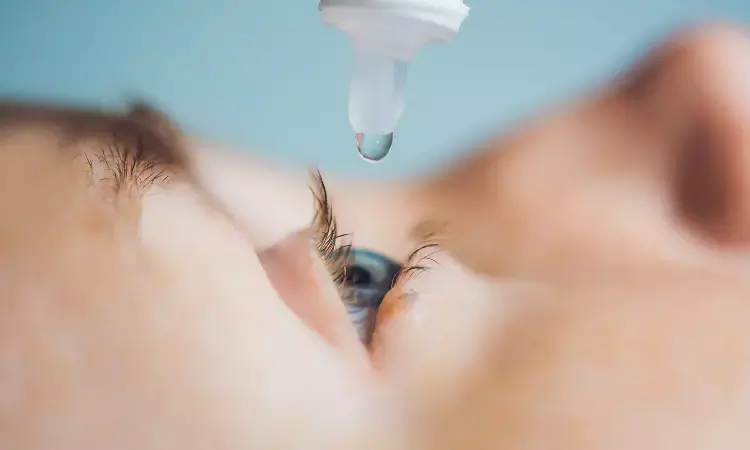- Home
- Medical news & Guidelines
- Anesthesiology
- Cardiology and CTVS
- Critical Care
- Dentistry
- Dermatology
- Diabetes and Endocrinology
- ENT
- Gastroenterology
- Medicine
- Nephrology
- Neurology
- Obstretics-Gynaecology
- Oncology
- Ophthalmology
- Orthopaedics
- Pediatrics-Neonatology
- Psychiatry
- Pulmonology
- Radiology
- Surgery
- Urology
- Laboratory Medicine
- Diet
- Nursing
- Paramedical
- Physiotherapy
- Health news
- Fact Check
- Bone Health Fact Check
- Brain Health Fact Check
- Cancer Related Fact Check
- Child Care Fact Check
- Dental and oral health fact check
- Diabetes and metabolic health fact check
- Diet and Nutrition Fact Check
- Eye and ENT Care Fact Check
- Fitness fact check
- Gut health fact check
- Heart health fact check
- Kidney health fact check
- Medical education fact check
- Men's health fact check
- Respiratory fact check
- Skin and hair care fact check
- Vaccine and Immunization fact check
- Women's health fact check
- AYUSH
- State News
- Andaman and Nicobar Islands
- Andhra Pradesh
- Arunachal Pradesh
- Assam
- Bihar
- Chandigarh
- Chattisgarh
- Dadra and Nagar Haveli
- Daman and Diu
- Delhi
- Goa
- Gujarat
- Haryana
- Himachal Pradesh
- Jammu & Kashmir
- Jharkhand
- Karnataka
- Kerala
- Ladakh
- Lakshadweep
- Madhya Pradesh
- Maharashtra
- Manipur
- Meghalaya
- Mizoram
- Nagaland
- Odisha
- Puducherry
- Punjab
- Rajasthan
- Sikkim
- Tamil Nadu
- Telangana
- Tripura
- Uttar Pradesh
- Uttrakhand
- West Bengal
- Medical Education
- Industry
Plasma-Rich Protein eye drops accelerate corneal wound healing: BMJ

A new study published in the British Journal of Ophthalmology suggests that Higher amounts of growth factors were produced during corneal epithelial wound healing after four weeks of platelet-rich plasma (PRP) eye-drop storage at 4°C.
In a number of medical specialties, PRP has been proven to encourage biological tissues' responses to wound healing. Topical PRP therapy has been used in the field of ophthalmology to treat a variety of corneal diseases, including acute hydrops for keratoconus, symptomatic dry eye, ocular surface syndrome following laser in situ keratomileusis (LASIK), persistent corneal epithelial defect, recurrent corneal erosion, dormant corneal ulcers, and limbal stem cell deficiency. In this study, Yuichi Okumura and colleagues investigated the effectiveness and sterility of autologous serum (AS) eye drops with preserved PRP eye drops for the treatment of corneal epithelial wounds.
Peripheral blood was drawn from six healthy participants and kept at 4°C to create PRP and AS eye-drops. During storage for up to 4 weeks, platelet and leukocyte counts, levels of transforming growth factor (TGF)-1, epidermal growth factor (EGF), and fibronectin were measured. 4-week post-storage sample cultures were used to determine sterility. The effectiveness of PRP, AS, and phosphate-buffered saline (PBS) eye drops was evaluated using corneal epithelial wound healing tests in vitro and in vivo and wound areas were monitored every three hours under a microscope.
The key findings of this study were;
1. PRP had higher platelet and lower leucocyte counts on the day of preparation than whole blood.
2. After storage, PRP eyedrops had much greater amounts of TGF-1, EGF, and fibronectin than AS eyedrops.
3. PRP eye-drops used the day of preparation to dramatically accelerated corneal epithelial wound healing in vitro and in vivo as compared to PBS.
4. In addition, compared to PBS and AS eyedrops, PRP eyedrops held for 4 weeks significantly accelerated corneal wound healing.
In conclusion, in addition to retaining sterility, PRP eye-drops held at 4°C for four weeks stimulated corneal epithelial wound healing with greater levels of growth factors than those seen in AS eye-drops. This finding suggests that this preparation addresses unmet medical requirements in the treatment of refractory keratoconjunctivitis epithelial diseases.
Reference:
Okumura, Y., Inomata, T., Fujimoto, K., Fujio, K., Zhu, J., Yanagawa, A., Shokirova, H., Saita, Y., Kobayashi, Y., Nagao, M., Nishio, H., Sung, J., Midorikawa-Inomata, A., Eguchi, A., Kuwahara, M., & Murakami, A. (2022). Biological effects of stored platelet-rich plasma eye-drops in corneal wound healing. In British Journal of Ophthalmology (p. bjo-2022-322068). BMJ. https://doi.org/10.1136/bjo-2022-322068
Neuroscience Masters graduate
Jacinthlyn Sylvia, a Neuroscience Master's graduate from Chennai has worked extensively in deciphering the neurobiology of cognition and motor control in aging. She also has spread-out exposure to Neurosurgery from her Bachelor’s. She is currently involved in active Neuro-Oncology research. She is an upcoming neuroscientist with a fiery passion for writing. Her news cover at Medical Dialogues feature recent discoveries and updates from the healthcare and biomedical research fields. She can be reached at editorial@medicaldialogues.in
Dr Kamal Kant Kohli-MBBS, DTCD- a chest specialist with more than 30 years of practice and a flair for writing clinical articles, Dr Kamal Kant Kohli joined Medical Dialogues as a Chief Editor of Medical News. Besides writing articles, as an editor, he proofreads and verifies all the medical content published on Medical Dialogues including those coming from journals, studies,medical conferences,guidelines etc. Email: drkohli@medicaldialogues.in. Contact no. 011-43720751


